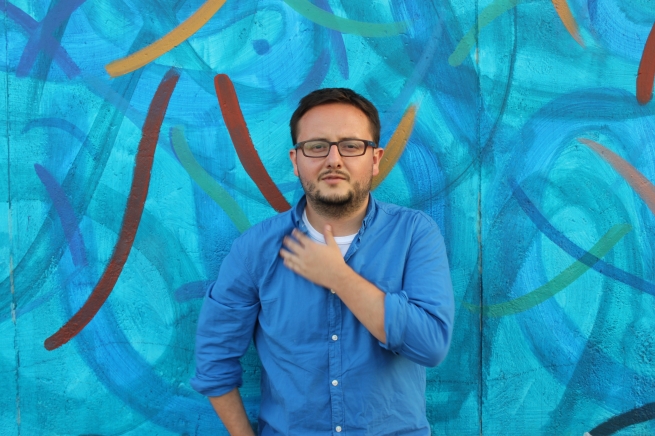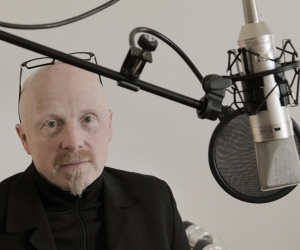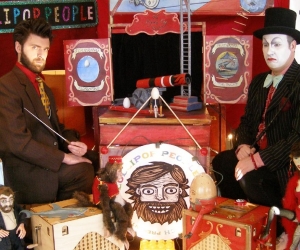
YOU DON'T HAVE TO KNOW ANYTHING ABOUT MATHEMATICAL HYPERSURFACES or guitar architecture to enjoy the dense sparkle, relentless energy, and intelligent swarm behaviour of Juan Camilo Vásquez’ Calíope (canto de las abejas) for guitar and electronics—but it definitely enhances the listening experience if you know a little.
The Colombian composer’s 2014 work, winner of Musicworks’ 2015 Electronic Music Composition contest, was developed, in part, with Slovenian guitarist Primož Sukič in the electronic music studio of Stuttgart’s renowned State University of Music and the Performing Arts, where Vásquez was studying a couple of years ago. The two musicians, who were living an hour apart, began their collaboration by meeting from time to time in the studio to experiment with ideas (including techniques and tunings), which the composer would record and then process in different ways.
“I used to study guitar, so I know the instrument, but I had a very different point of view watching Primož play—thinking about the more plastic, more material side of the instrument,” Vásquez told me in an interview that took place over Skype and email. In addition to the studio work, Vásquez conducted research that led him to a description of a hyperbolic paraboloid—a tridimensional surface constructed with straight lines. “I took the idea of using a straight line to create a volume, and I thought, Perhaps in music I can create a line, and make replicas with this line to create a sonic culture, using the guitar as the main source for this line.
“I was conceiving the piece as a sculpture,” he continues. “Form is important—the direction from one point to another.” Although improvisation was used in the development of Calíope (canto de las abejas), the final composition is completely notated. “My interest working in electronic music is about achieving control: how I work with electronics—interface or patches—to control things exactly.”
Four minutes into the eight-and-a-half-minute piece, the guitar part calls for different attacks (arpeggios and, in particular, the technique known as Bartók pizzicato, in which strings are snapped vertically and rebound off the fingerboard) as well as for strokes with a metal slide over the strings. “All of this happens between the [guitar] bridge and the edge of the fingerboard [beside the sound hole],” Vásquez explains. “That means I had to create a special type of notation, because that is not a common place to play the guitar; normally everything that is notated happens over the main fingerboard [on the guitar neck].”
During their sessions, Sukič had suggested using a scordatura (a deviation from standard guitar tuning) of Ds and As, with most strings tuned a further quarter tone higher or lower. “It was important to achieve a very special sonority during the whole piece, given that the use of a slide kind of defines the sonority of the open strings, though transposed through the entire fretboard,” the composer says. “The scordatura also gives a tonal centricity around the A and the D, which is very important for the structure of the piece.”
Calíope (canto de las abejas)—Calliope is the Greek muse of epic poetry, and the parenthetical phrase in the title means song of the bees—was first performed by Sukič and Vásquez during the former’s short concert tour of Slovenia in 2014. The recording on the companion CD to this issue was made at the second performance. “He played it again in Brussels, and another guitarist has performed the piece in Stuttgart,” says Vásquez, who is once again living in Bogota, his hometown, after spending many months in Europe, including, most recently, an artistic residency in Berlin supported by a Schloss Wiepersdorf scholarship.
“I would love it to be performed live here in Colombia, but it’s not easy to make this happen,” says Vásquez. “There are a lot of very talented guitarists, but they are either not into new compositions or they are too busy. So I am looking forward to an opportunity to make this happen.”
Vásquez was studying music at university in Colombia when he decided he wanted to compose. His final project before graduation was also his first piece for electronics, which also featured voice. In 2008, he and a group of artists cofounded the Colombian Circle of Contemporary Music (CCMC), the main goal of which is to promote contemporary music in Colombia. “After I moved to Europe I was surprised to discover that, while the governments support contemporary music, a lot of support comes from private sources. This is something that has not happened in Colombia, where there is only support from the government’s cultural ministry.”
Vásquez now splits his time between teaching at Universidad Distrital in Bogota and composing. “My goal in returning here to live and work is to work with other musicians of my generation to create a bridge between contemporary composers and people interested in contemporary composed music.”


